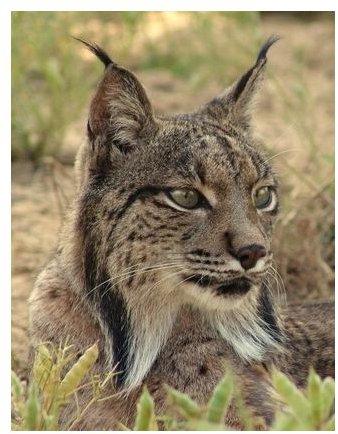Interesting Facts about the Iberian Lynx: Description, Habitat, Diet, & More
The Iberian Lynx
These beautiful cats have been steadily decreasing in numbers over the last 200 years. There are less than 100 left in the world today and there are only two confirmed breeding populations, which are both small and isolated. The Iberian lynx is closely related to the Eurasian lynx. They are similar in appearance but the Iberian is much smaller. Below are some interesting facts about the Iberian lynx.
Description

The average length is 32 to 38 inches, height is 16 to 20 inches, and weight is 20 to 30 pounds. The males are larger than the females. The fur is yellowish to reddish brown in color with many dark spots. The Iberian lynx has a muscular body, long hind legs, tufted ears and jaws, and a short black tipped tail.
Habitat
These cats live in the mountains where rabbit populations are high. Pastures are preferred at night when they hunt and scrubland is where they mostly stay during the day for rest and protection.
Diet
The Iberian lynx feeds mostly on rabbits. When the rabbit population decreases, usually due to viral outbreaks, it will eat other animals, including small rodents, ducks, and the young of deer, wild boar, and mouflon sheep.
Reproduction
January to July is mating season with January and February the peak months. Mating is the only time the male and female will associate with one another. The gestation period lasts about 60-70 days. The litter size ranges from 1 to 5 kittens with an average of 2 to 3 kittens. The female can give birth every year.
Kittens
For the first 20 days, the kittens will stay in the natal den. After that, the mother will move them to another den. She will relocate them as many as 3 or 4 times. It is believed that this may provide more room as the kittens develop their motor skills, protect the young from predators (which are attracted by the smell from the build up of feces), and prevent parasite infestations.
The kittens will start eating solid food in about a month but they will continue nursing for 3 to 4 months. At 10 months of age, they become independent; however, they will stay near the mother for about another 20 months. Mortality rates are very high when they leave to find their own territory.
Females become sexually mature at one year of age but they will not reproduce until they have their own territory.
More Information
The following are more interesting facts about the Iberian lynx:
• They have great hearing. The tufts of fur on the tips of their ears function as hearing aids.
• They have great eyesight. An Iberian lynx can spot a mouse 250 feet away.
• These stealthy cats are rarely seen by humans.
• Their life span in the wild is 14 years.
References
Animal Diversity: Lynx pardinus - https://animaldiversity.ummz.umich.edu/site/accounts/information/Lynx_pardinus.html
International Society for Endangered Cats: Iberian Lynx - https://www.wildcatconservation.org/Iberian_Lynx_%28Lynx_pardinus%29.html
